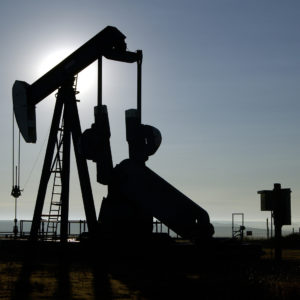In 2012, then-President Obama often repeated the line that the U.S. had only 2 percent of the world’s proven oil reserves, while American consumption far outpaced that. It was part of his argument for alternative fuels and green energy. Five years later, with gas prices much lower, the line seems bizarre. Was Obama wrong about the size of the proven oil reserves?
Throughout much of the 1940s, the United States had around 22 billion barrels in proven oil reserves. Seventy years later, American proven oil reserves continue to hover at around 22 billion barrels, despite decades of drilling. It’s not that once dry wells are filling up again. Rather, it comes down to the definition of proven oil reserves.
When it comes to oil, a large difference exists between proven resources and proven reserves. Resources implies the quantity of raw material in the ground, which can only be estimated. Reserves, however, is a commercial term.
“The term [proven reserves] is applied to known reservoirs where there is a probability of at least 90% that oil or gas can be produced in commercial quantities,” says William O’Keefe, former COO of the American Petroleum Institute.
“The fact that an area contains proven reserves does not guarantee production in economic quantities,” he cautioned.
This means that the size of American proven oil reserves can fluctuate dramatically on the basis of shifts in prices.
In December, the U.S. Energy Information Administration released trailing data on proved oil and natural gas reserves in 2015. The report shows the dramatic effect falling oil prices had on proved oil reserves. While oil production continued to increase in 2015, the sudden fall in prices made wells with higher extraction costs suddenly unprofitable.
“The average price of oil in 2015 dropped 47 percent compared to 2014, causing operators to postpone or cancel development plans and revise their proved reserves of crude oil and lease condensate downward,” the EIA wrote. “As a result, U.S. proved reserves declined by 11.8 percent (4.7 billion barrels) in 2015.”
Texas alone saw proved reserves drop by 1 billion barrels, even as oil fields were expanded. During the same period, however, the price of oil plummeted. The price of natural gas also dropped by more than 40 percent.
“Revisions primarily occur when operators change their estimates of what they will be able to produce from the properties they operate in response to changing prices or improvements in technology,” the EIA explains.
Ironically, the success of fracking, which dramatically lowered oil prices, has made estimates of proved reserves drop. The lower sale price of oil makes the development of certain fields unprofitable.
“Higher fuel prices typically increase estimates (positive revisions) as operators consider a broader portion of the resource base economically producible, or proved,” says the EIA. “Lower prices, on the other hand, generally reduce estimates (negative revisions) as the economically producible base diminishes.”
Reserves are estimated given existing prices and technology. As the North Dakota fracking boom demonstrated, though, technological innovation can allow for future exploitation of oil deposits previously considered inaccessible. An analysis by Rystad Energy, an oil and gas consulting firm, attempted to take this into consideration to determine which country had the largest volume of oil reserves.
Rystad’s estimate included oil in existing proven fields, discovered and likely recoverable oil, and an estimate for recoverable oil in yet to be discovered fields. The last estimate attempts to quantify resources that present day pricing and technology cannot reach. The results highlight the importance of American technological innovation to oil production.
Much of American energy resources consist of unconventional shale deposits. Today it would be difficult to extract this oil, but future technology makes the use of these deposits more likely. Observers say that the U.S. has the potential to see surprising production growth rates in the future.
“There is little potential for future surprises in many other countries, but in the U.S. there is,” said Per Magnus Nysveen, analyst at Rystad Energy, noting recent discoveries in Texas and New Mexico. “Three years ago the U.S. was behind Russia, Canada and Saudi Arabia.”
The story of U.S. oil exploration is full of surprises, as the size of American proven oil reserves continues to confound naysayers.
“During the 70s, it was believed that proven reserves would only last until the end of the century,” said O’Keefe. Instead, technology allowed for exploration that quite literally fueled America’s economy.
“With the development of horizontal drilling, hydrological fracturing, and enhanced seismic mapping, reserve estimates increased significantly,” he continued. “Those advances in technology and higher prices explain why the decline in U.S. production was reversed and now stands at or near the highest levels in decades.”

